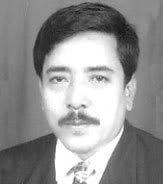The third place:sociology of the coffee house
There is no doubt that coffee holds a special place in the hearts of many Americans. The second most widely consumed beverage after water provides comfort, taste, and solace to those who drink it. A certain mystique surrounds the beverage, and new innovations in its preparation bring the coffee industry new customers every day. But the consumption of coffee goes well beyond the latest innovation or the most recent crop. In fact, there is a direct correlation between those who drink coffee at the local café today and the women who met and socialized at the well where they collected water hundreds of years ago.
The Social Science of the BeanThere are many reasons coffee has become deeply ingrained in our society. Of course, the beverage tastes wonderful, but the popularity of specialty coffee runs much deeper than that. It is very easy for most Americans to buy great beans, purchase wonderful brewing devices (machines, grinders, brewers) and prepare coffee each morning at home in a matter of minutes. Why then do coffee drinkers go to a coffeehouse and pay two to three dollars for something they can prepare at home for a fraction of the cost? The answer isn't found in chemistry or physics books that explain proper brewing principles; it's found in the textbooks of sociology and psychology.
The Third Place TheoryAt the National Coffee Association (NCA) conference in Florida March 7-9, I attended the keynote address by Howard Shultz, the chairman of the board of Starbucks. Shultz is famous in the history of specialty coffee for taking a few simple coffee stores in Seattle and expanding his vision into a worldwide phenomena that now includes over 5000 cafés. After hearing his speech, it became clear to me how his insight and passion had created the world's largest coffee chain. It has long been known that Shultz sculpted his vision around "place". Of course, marketing and product had to meet certain standards, but it was the creation of the "third place" that drove his vision and fueled the explosion of retail coffee outlets around the globe.
In his book, The Great Good Place: cafés, bookstores, bars, coffeeshops, hair salons and other hangouts at the heart of community, Ray Oldenburg investigates and explains this third place that Shultz found essential to the success of Starbucks. The third place, says Oldenburg, is where people congregate to find a sense of community outside of the home and workplace. By their nature, humans have a desperate need for somewhere to meet friends or take solace in the familiarity of both people and their surroundings.
From the beginning of our young country, bars serving alcohol have been the primary third place. From the saloons we see in early TV Westerns to modern day hip and cool watering holes, bars were once the only option for people to meet and socialize. The problem with bars for many people is alcohol. Not everyone wants to achieve an altered state, and the stigma surrounding this third-place option has grown with the enactment of stricter drunk driving laws and concerns about potential health risks.
It's not about the Coffee—but the BreakIn the early years of this industry, Roger Sandon, founder and publisher of Café Olé Magazine, said to me, "Bruce, this is not about the coffee… it's about the break." Another Seattle friend, Italian-born Mauro Cipolla, founder of Caffe D' arte, echoed the same sentiment. Mauro asserts that while the coffee in Italy is excellent, the reason there are over 200 thousand coffee bars in that country is that they provide a place to meet friends and neighbors. These small bars on nearly every corner are where you learn your close friend's wife is pregnant, someone’s uncle is ill, or the score of last night's soccer match.
North America is finally catching up to Europe, with its older and well-established third-place culture. In the past ten years, coffee establishments have played the major role in satisfying the inner need of Americans for a third sanctuary.
A good friend of mine, who recently moved to a bedroom community of Seattle, told me more about how thrilled she was with the local coffee bar on the corner than she was with the beautiful apartment she lived in with a view of Lake Washington. Each time I called her, she talked more about the hangout she had found than any other part of her life. She told me about about a group of people who met each morning before work. She was thrilled the day they asked her to join them, and she told me she now spends hours socializing with the group almost every Saturday and Sunday morning. This particular woman was involved in the coffee industry and could brew up a great cup at home, but within the confines of her kitchen she could not brew up the friendship or fulfill the need we all have as humans to share and interact with others.
From the Bonfire to the Modern Day Coffee BarAs we enter this new century, I believe we are only seeing the beginning of the influence that specialty coffee will have on society. Many have predicted the industry will soon reach its saturation point; I believe this is far from true. Attendance at coffee tradeshows is breaking records. Companies within the industry are experiencing unprecedented growth. Coffee establishments featuring the third place are opening by the hundreds each day. The great cup of coffee—the aroma, the taste—is only part of the reason. It is the human need for contact that drives this industry. Anthropologists who study our culture in the future will discover that coffee bars met the needs of 21st century people in the very same way bonfires—bonding fires—served the cave dwellers who gathered at night many, many years ago.






|